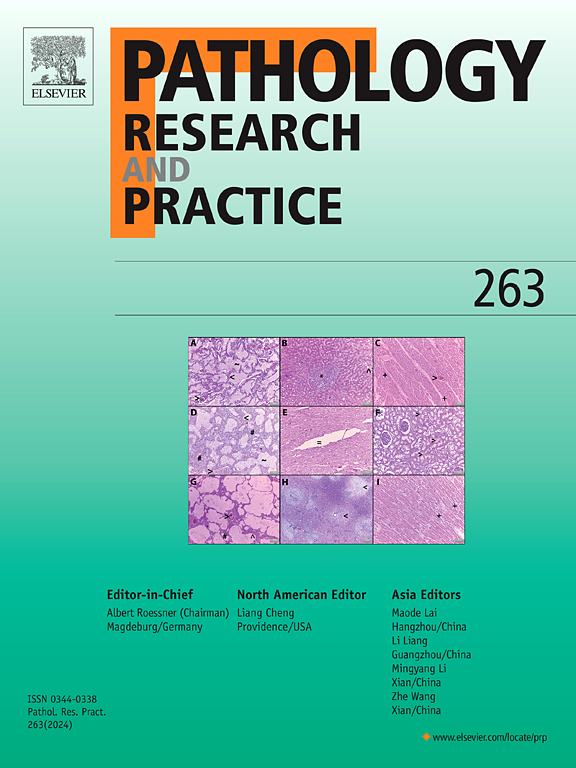RCC-Ma loss predicts poor survival and metastatic risk in clear cell renal cell carcinoma
IF 2.9
4区 医学
Q2 PATHOLOGY
引用次数: 0
Abstract
Background
With the increasing number of renal cell carcinoma subtypes and implications for prognosis and therapy, correct classification of renal masses remains a challenging issue. Clear cell renal cell carcinoma (ccRCC) is a tumor with an immunoprofile that often does not follow paradigmatic rules. Thus, the aim of this study was to analyze the heterogeneity of immunohistochemical staining patterns in ccRCC regarding patient prognosis.
Methods
The study cohort consisted of 727 ccRCC patients with surgical treatment between 1995 and 2006 and with comprehensive clinicopathological information and follow-up data. Only 1.6 % of patients received modern targeted therapy after surgery. The patients were stratified analogue to the Leibovich Risk Score (LRS). A tissue microarray was immunohistochemically stained for vimentin, CAIX, CD10, RCC-Ma, AMACR, CK7 and CD117. The expression in the tumor tissue was semiquantitatively scored and tested for association with clinicopathological tumor features and patient survival.
Results
Loss of RCC-Ma was an independent prognostic biomarker for disease specific survival (p = 0.01) and associated with a higher risk of developing metastasis in the intermediate risk group of the LRS as well as aggressive tumor features, such as higher tumor grade and stage, metastasis and necrosis. The other analyzed immunohistochemical biomarkers had no impact on patient prognosis.
Conclusion
As a predictor of poor survival and metastatic risk, RCC-Ma is likely to be a valuable contributor to the risk stratification in ccRCC patients. Moreover, this study cohort provides a valuable resource for investigations on the natural, therapy-naive clinical course of the disease and can serve as a reference for other study collectives, including patients treated with up-to-date targeted therapies.
求助全文
约1分钟内获得全文
求助全文
来源期刊
CiteScore
5.00
自引率
3.60%
发文量
405
审稿时长
24 days
期刊介绍:
Pathology, Research and Practice provides accessible coverage of the most recent developments across the entire field of pathology: Reviews focus on recent progress in pathology, while Comments look at interesting current problems and at hypotheses for future developments in pathology. Original Papers present novel findings on all aspects of general, anatomic and molecular pathology. Rapid Communications inform readers on preliminary findings that may be relevant for further studies and need to be communicated quickly. Teaching Cases look at new aspects or special diagnostic problems of diseases and at case reports relevant for the pathologist''s practice.

 求助内容:
求助内容: 应助结果提醒方式:
应助结果提醒方式:


